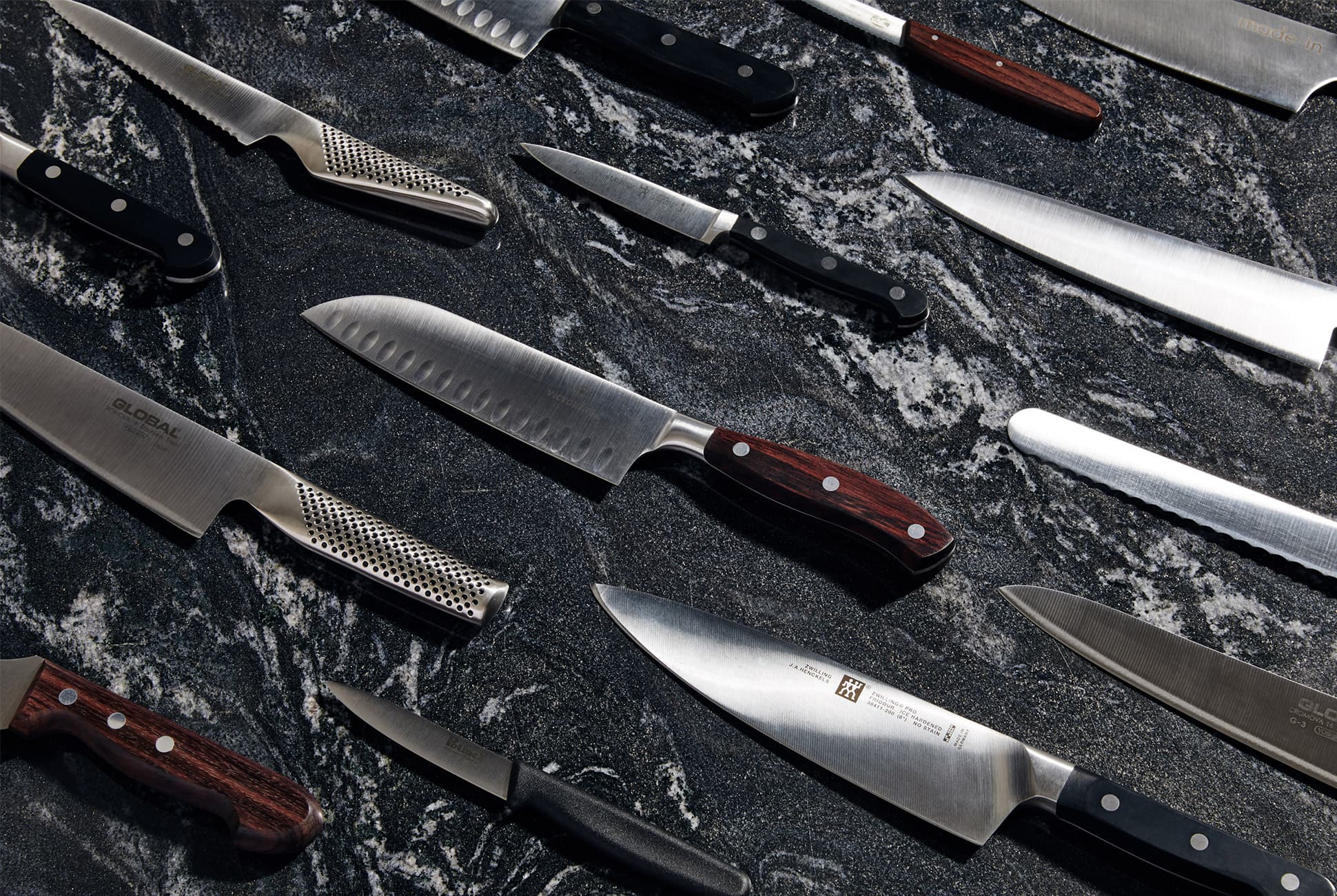The handle at the Kamikoto knives is made of wood, and most often magnolia is used. The Japanese do not consider it important to make handles of particularly durable materials, but prefer to simply replace it when worn. The length of the handle is on average from 14 to 18 cm, in the case of the largest knife (for cutting tuna and large fish species), it reaches 30 cm. Traditionally, the section in the form of an oval or round with an edge, is also found as an octahedron.
Blades of Japanese knives are of several types, the following groups can be distinguished:
Honjaki are the most expensive and most prestigious models of cook knives. They are made of white and blue steel, manually. Such blades are characterized by the highest hardness, with an indicator in the range of 62-65 HRC.
- Kasumi – traditional knives, with a characteristic one-sided sharpening. In this case, the method of a two-layer laminate is used – when one side of the core is made of high-carbon, hardest steel, coated with mild steel.
- Warikomi – in such knives the core is made of solid steel and its double-sided lining is made of mild steel;
- Suminogashi – such blades are distinguished by the facings of a soft multilayer laminate.
It is interesting that the Japanese, in relation to the sharpness of the knife, even have a special term – kirenaga, meaning the duration of its sharpness. Of all the blades listed, the longest kirenaga have Honjaki knives.
Steel for the production of Japanese knives
For the production of knives, steel is used, subjected to a special hardening, which can be of three grades, these are:
- ShiroGami (white paper)
- Ki Gami (yellow paper)
- AoGami (blue paper)
Each type of steel got its name by the color of the paper in which the finished steel is wrapped directly at the manufacturer.
ShiroGami is considered in Japan to be the highest class steel for blades, the most expensive products are produced from it. The ShiroGami production is based on the oldest technology, according to which the purest steel is the one without additional impurities, i.e. close to perfect composition: iron-carbon. This composition is recognized as “gold” in view of the fact that the product can be given reference cutting properties. The carbon here can be from 1.10% to 1.40%. In the form of impurities, silicon and manganese are present in a minimal amount (but they are not considered harmful, on the contrary, they add strength to the product).
Ki Gami steel is almost identical to ShiroGami, the difference is only in a slightly reduced carbon content (in this case, from 1.10% to 1.20%). The principle of production is the same.


